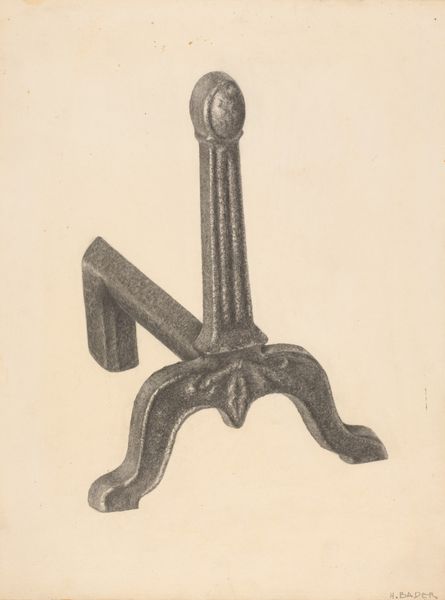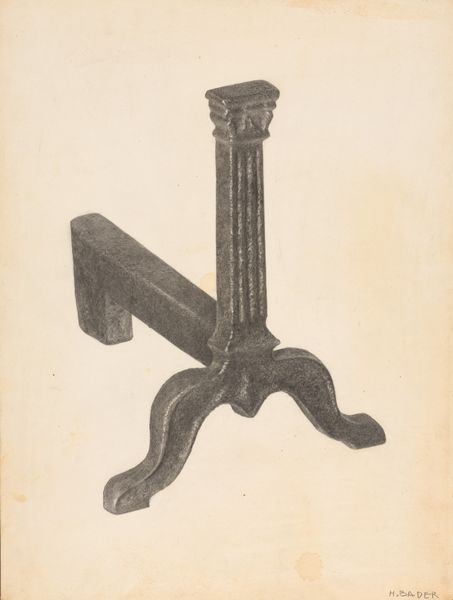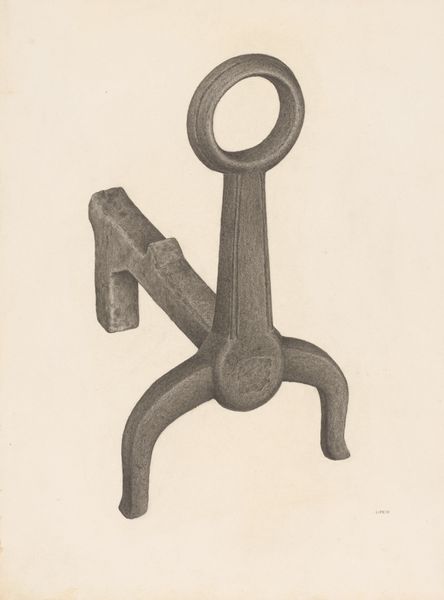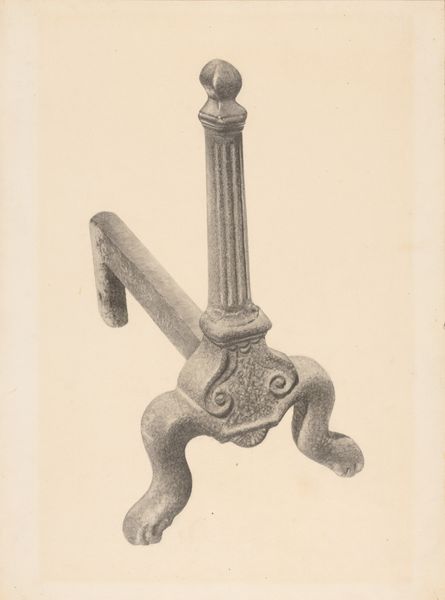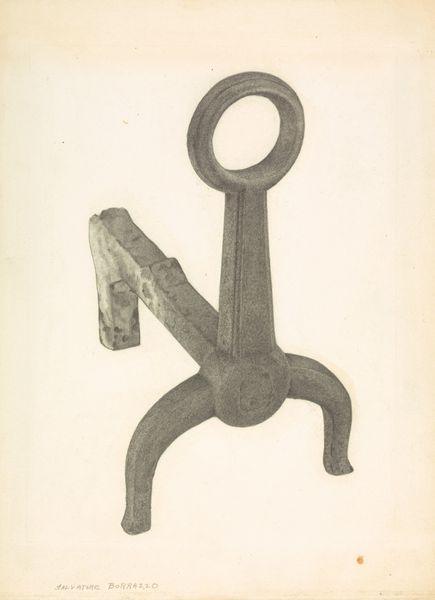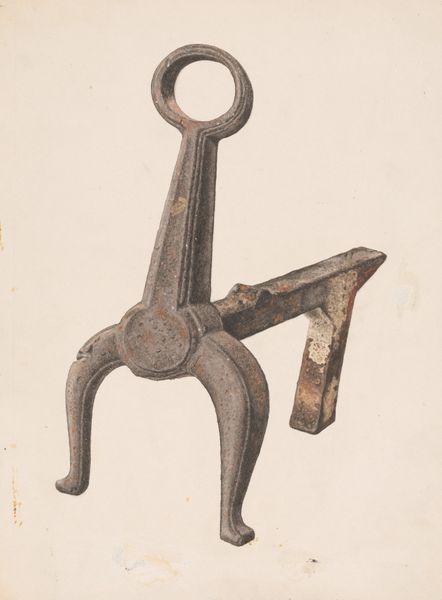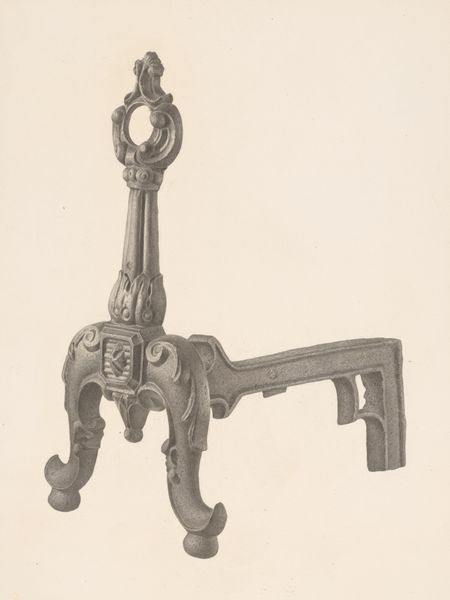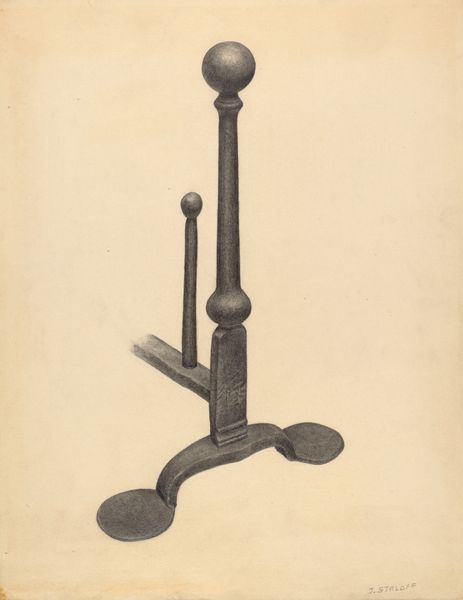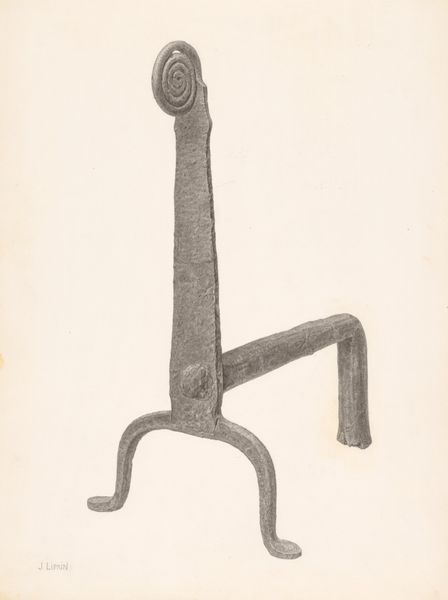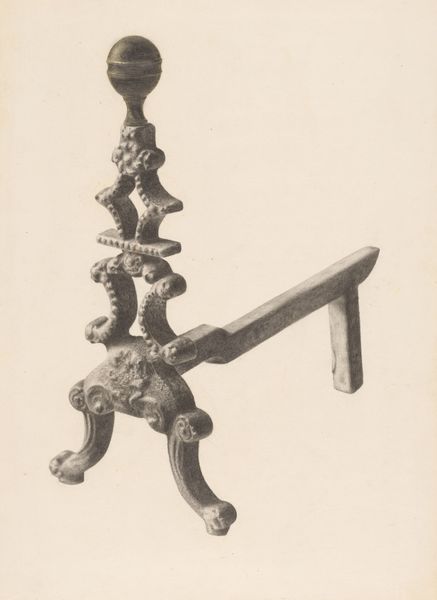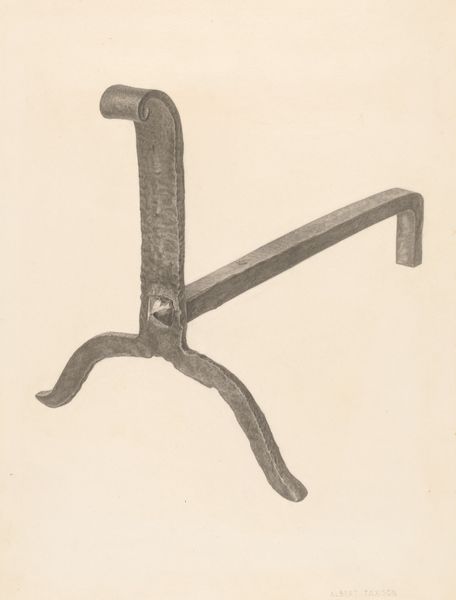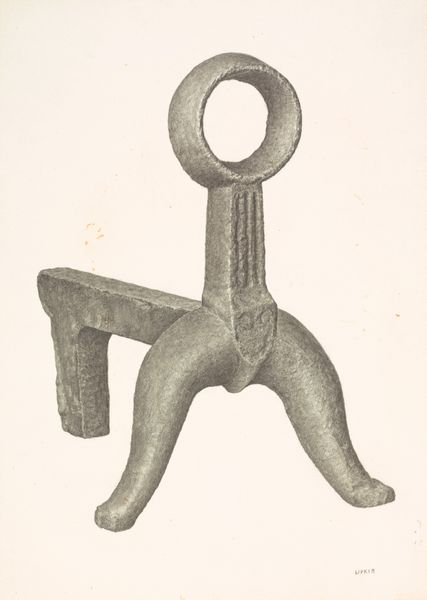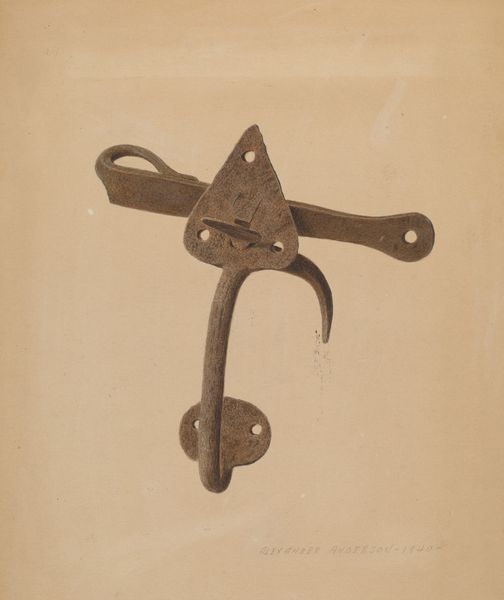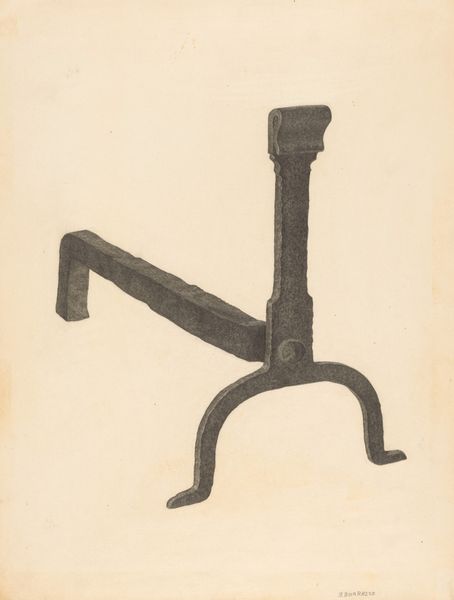
drawing, pencil, graphite
#
drawing
#
pencil drawing
#
pencil
#
graphite
Dimensions: overall: 40.6 x 30.5 cm (16 x 12 in.) Original IAD Object: 17 5/8" high; 11" wide; 14 3/4" deep; thickness of shaft: 7/8"
Copyright: National Gallery of Art: CC0 1.0
Curator: It looks solid, utilitarian, and even a little austere. I feel like I should be adding logs to a fireplace! Editor: We’re looking at “Andiron (one of pair),” a drawing rendered around 1938 by Jack Staloff. It’s crafted with graphite and pencil on paper. What strikes you about its construction, beyond the immediate visual impression? Curator: The dedication to detail using such commonplace materials is surprising. Look at the variation in the graphite, suggesting texture and wear on the metal. The contrast makes this utilitarian object worthy of display, removed from its usual function, the labor involved seems important. Editor: Exactly. And what's compelling is that Staloff has transformed what would normally be a mass-produced object—a functional andiron, intended for domestic use—into an object of artistic contemplation. This piece enters into dialogue with similar artworks funded through New Deal programs, art that questions the values of craft within industrialized settings. Do you get a sense of that? Curator: I see it now. The emphasis isn’t solely on aesthetic value; the drawing highlights the role of manufacture. It suggests a critique of the relationship between design, industrial production, and labor during the Depression era. Editor: Right. Furthermore, think about how institutions, particularly museums supported by New Deal programs, influenced this type of artistic production. By showcasing commonplace items, these institutions elevated them and redefined their social and cultural importance. Curator: So, we’re not just admiring a drawing of an andiron, we’re also examining how art shapes public perception. We’re reflecting on value in times of hardship and change. Editor: Precisely. And in a way, this simple andiron—or rather, Staloff's thoughtful depiction of it— becomes a small monument to those economic shifts and to the evolving role of art within society. Curator: It changes how I see drawings – it highlights its potential as commentary on daily life and social value. Editor: Yes, it pushes beyond a simple image to prompt historical consideration of industry and cultural memory.
Comments
No comments
Be the first to comment and join the conversation on the ultimate creative platform.
